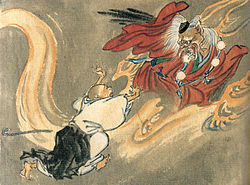The Tosa has been bred for hundreds of years in Japan. The country has a long history of dog fighting, beginning in the 14th century. It was developed between the period of 1868 and 1912 by crosses with the Kochi (a local Japanese breed), native Shikoku fighting dogs, with Western breeds such as the German Pointer, Mastiff, Great Dane, Bulldog, St. Bernard and the Bull Terrier. Tosas were often referred to as the “Sumo wrestler of the dog world.” In Japan, the Tosa is considered a national treasure. Although dog fighting is now illegal in Europe, North America, and Japan, secret, illegal pit fights continue in remote rural regions of Japan, where the Tosa, at 66-88 pounds (30-40 kg.)—smaller than those bred in the West—is still used for fighting. The breed excels at Japanese-style dog fighting. Japanese dog-fighting rules in the last century demanded that dogs fight silently, without cowering, and the Tosa fought by these rules—relentlessly and silently. The Tosa is a rare breed, even in its native land and has only recently been introduced to the USA. Unfortunately, this breed is banned in some countries as a dangerous breed. It is definitely unsuitable for beginners, but with the proper socialization, handling and training, it can make a wonderful family companion. This massive dog excels at weight-pulling and makes a great watch and guard dog.
Tag: Dog
What is a Tengu?
Tengu (“heavenly dog”) are a type of legendary creature found in Japanese folk religion and are also considered a type of Shinto god (kami) or yōkai (supernatural beings). Although they take their name from a dog-like Chinese demon (Tiangou), the tengu were originally thought to take the forms of birds of prey, and they are traditionally depicted with both human and avian characteristics. The earliest tengu were pictured with beaks, but this feature has often been humanized as an unnaturally long nose, which today is widely considered the tengu’s defining characteristic in the popular imagination.

